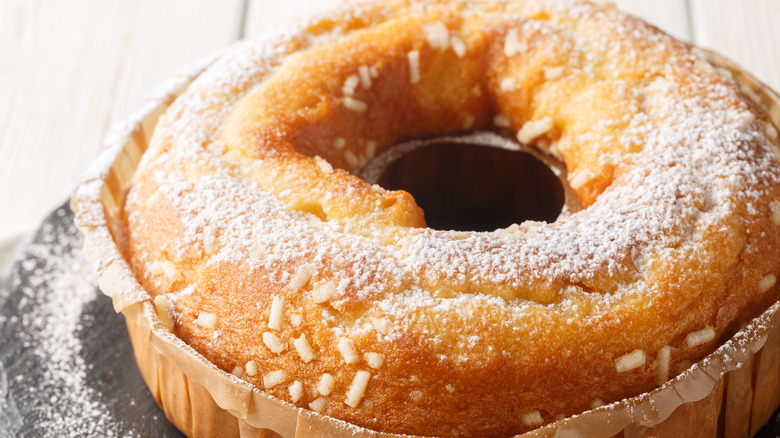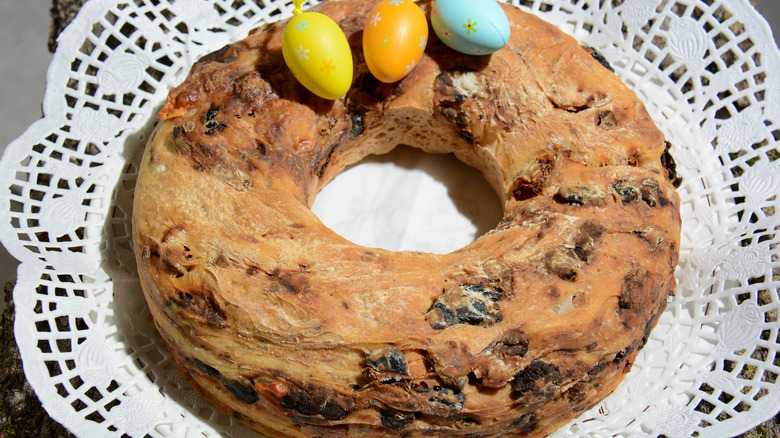Ciambella Is The Donut-Like Cake Enjoyed For Breakfast In Italy
Have you ever wondered what breakfast looks like in countries around the world? If you're in Italy and looking for some breakfast, you'll likely encounter these donut-like cakes called ciambella. You'll often find this traditional Italian cake served as slices with coffee, strong expresso, cappuccino, or even coffee with a shot of booze. To make ciambella, bakers will use staple ingredients such as olive oil and lemons. And while ciambella is also known as an Italian Easter cake, this sweet is enjoyed throughout the year.
Ciambella's historic origins are a bit muddled. Some say the cake originated in the Emilia-Romanga region of Italy when it was first eaten with Easter eggs and cured salami. Others say a Spanish baker from Madrid, Leone Ciambelli, invented the ciambella and entered it in a contentious baking competition. The mystery and urban legends surrounding its origins only make it more intriguing.
Today, while ciambella graces breakfast tables around Italy from January to December, you can have it for dessert or as an appetizer. It is also easy to make, so it's often eaten with hams, salamis, and cheeses, or gifted at gatherings.
Ciambella is the Italian cake version of kitchen sink cookies
Ciambella is easy to bake at home with simple ingredients, such as eggs, sugar, olive oil, flour, and lemon zest. Just note that this sweet cake should always be ring-shaped, with a hole in the middle like a large donut. Baking ciambella in a tube or bundt pan increases its rise, lightness, and fluffiness. The key flavors are lemon and olive oil, making it moist, refreshing, and light.
While it's meant to be a simple cake, many variations exist. You can make ciambella with a foolproof sourdough starter, for one. Then, there are fried versions and those made with ricotta, yogurt, chocolate, rose water or spiced with aniseed. Different regions of Italy have their variations, with some areas incorporating local fruits and nuts, such as almonds from Sicily.
One can also equate them to the cake version of America's kitchen-sink cookies. Much like how American bakers might throw a mix of whatever chocolate chips, nuts, and candies they have into their cookies, Italian grandmothers might vary their ciambella recipes based on their mood and the contents of their pantry. One day, you may have a carrot and walnut-based version, and the next, a boozy chocolate one with Italian liqueur.

